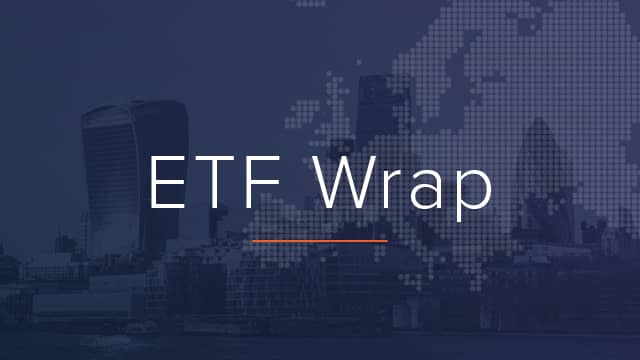The only thing more volatile than blockchain ETFs

[gpt3]rewrite
TNT, uranium fuel rods, and nitroglycerin aside, in ETF land, there are few compounds that can give you the kind of white-knuckle ride offered by blockchain-themed — that is, until Turkey gave economic and political uncertainty a spin.
On Monday, the iShares MSCI Turkey UCITS ETF ( ITKY ) had lost nearly 8% in valuation after incumbent President Recep Tayyip Erdogan secured 49.5% of the vote after the first round on 14 May.
Just two trading days before, the ETF jumped 9.4% in a single session as investors bet that opposition candidate Kemal Kilicdaroglu would win the presidency.
The challenger candidate is expected to restore Turkey’s central bank policy to something more akin to monetary orthodoxy after it cut interest rates from 19% to 8.5% last year, sending inflation soaring to 84.4% by November.
However, if a party does not achieve a decisive advantage last weekend, a run-off election will take place on 28 May.
Should Kilicdaroglu fail to pick up the pace to increase his current 44.9% share of the vote, Turkish stocks could be sent into freefall with 20-year incumbent Erdogan playing fast and loose with monetary policy.
Before the election, Turkey’s headline BIST 100 index had collapsed 21.8% this year, as of May 5, despite efforts by the Turkey Wealth Fund to bolster the market via a $1 billion investment in Turkish equity ETFs in February.
The sharp decline continues as the country’s central bank now asks banks to hold 60% of their deposits in lira to stimulate the shift to foreign currencies in recent years.
To drain lira deposits, Turkish bank deposit rates have risen from 10% to as high as 29%, with lira write-offs protecting bank rates doubling to more than 20%, a shift that has sparked an exodus in Turkish stocks as retail investors move to park their money in cash.
This is in stark contrast to last year, when 84% inflation and a 36.5% depreciation of the lira against the US dollar prompted investors to pile into domestic stocks in a desperate bid to preserve their wealth, and the number of trading accounts increased by 32% in 2022.
This rush to invest saw the BIST 100 rise 170.9%, and Turkish ETFs claimed the best return charts last year.
Now, Borsa Istanbul data shows that daily trading volumes have roughly halved to $2.5 billion, while foreign ownership of Turkish stocks has halved to 29% since 2019.
Regardless of who wins the presidency, a period of monetary policy sailing and thoughtful policy is likely to be what individual Turkish citizens are calling for. If some level of normalcy is restored, JP Morgan strategists suggest that foreign investors’ ownership of Turkish stocks returning to 50% would add $20 billion to the market.
Asterix and Obelix
Although not as fun as the hijinks of France’s favorite animated duo, Amundi and Lyxor ETFs have proven a good partnership since Amundi completed its acquisition of Société Générale’s ETF business last January.
The combined firm recently announced its three latest product mergers, including bringing together the respective euro- and dollar-denominated fixed income products to create Europe’s second and third largest floating rate bond ETFs.
In a month in which the asset manager has merged a total of six ETFs, Amundi also merged its US Treasury Bond ETF series, creating a product line housing $1.6 billion under management (AUM) and cutting fees in half to just 0.07 %.
Recent mergers are just the latest in a series of efficiency measures from the firm. In February, it merged the Amundi and Lyxor STOXX 600 ETFs to create a $6.3 billion strategy, the second-largest ETF that tracks the index.
In January, it merged Lyxor’s North America and S&P 500 ETFs to create a $7.5 billion product. If combined with Amundi’s S&P 500 ETF, the resulting product would claim assets of $14.1 billion and be within a stone’s throw of the Invesco S&P 500 UCITS ETF (SPXS), Europe’s third-largest index-tracking ETF.
The Iberian target market
A recent survey of 16,542 European adults by BlackRock and YouGov found that the number of ETF investors on the continent could jump by 32% over the next 12 months, with Iberia highlighted as the key growth point.
The peninsula comprising Spain, Portugal, Gibraltar and Andorra was found to have over one million potential investors set to enter ETFs, representing a 64% increase from current levels.
The region currently has among the lowest penetration rates for ETFs in Europe, as Spanish listed ETFs are subject to capital gains tax while mutual funds are exempt under the Traspasos regime.
European ETF leader Germany is also expected to see two million new ETF investors over the next year, with the rapid expansion of online distribution via platforms such as Scalable Capital driving the 22% growth forecast for the next 12 months.
ETF Wrap is the weekly summary of top stories on ETF Stream
[gpt3]
























